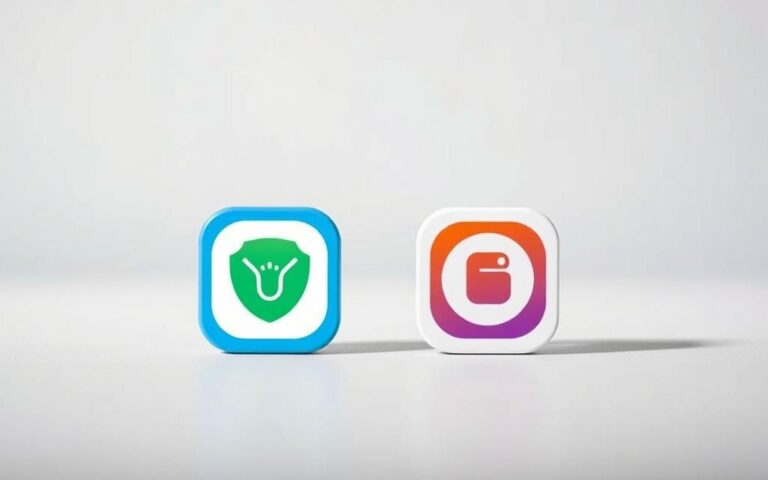Did you know over 95% of the top 1,000 Android apps use Kotlin? This language makes app development easier and opens new doors for developers. It’s especially great for making math learning apps. To start, you need to know the best frameworks and tools.
Using the right resources can make coding from scratch easier. This is key for anyone wanting to create their own math education tool.
For those looking to make their own math app, Android Studio is a great place to start. It offers a full environment for coding and testing. As technology grows, learning to program apps is more important than ever.
Understanding the Importance of Math Learning Apps
Math learning apps are key in today’s tech-driven education. They offer digital math resources for students of all ages. These apps make learning math fun and easy to understand. They show how technology can help students get better at math.
Benefits of Digital Math Resources
Digital math tools like apps have many benefits. They meet the needs of different learners. Here are some:
- Increased Accessibility: Students can learn anytime, anywhere. This makes learning outside the classroom easy.
- Interactive Tutorials: Multimedia makes learning fun for visual and auditory learners. It helps them understand tough topics better.
- Customization: Students can tailor their learning. They focus on areas they need to improve, boosting their understanding.
How Apps Enhance Traditional Learning
Math apps work well with traditional learning. They add multimedia content to textbooks. This gives students a deeper understanding of math.
Apps also offer real-time feedback. This lets students see how they’re doing and change their approach if needed.
The Role of Gamification in Math Education
Gamified learning tools make math fun and effective. They turn learning into an interactive game. This boosts motivation and helps students remember what they learn.
Features like challenges and rewards keep students engaged. This leads to better math skills.

Popular Math Learning Apps to Consider
Many math learning apps have come out to help with math education. They meet different needs, from homework help to interactive practice. Let’s look at some top choices.
Mathway: Solving Problems with Ease
Mathway is a user-friendly app that solves a wide range of math problems. It gives step-by-step answers and explanations. This makes it a top pick for students at all levels.
The app’s design makes learning fun and easy. It helps with everything from simple algebra to complex calculus. Users get instant feedback on their work.
Photomath: Instant Solutions via Camera
Photomath changes the game by letting you solve math problems with your phone’s camera. It quickly turns tough equations into easy-to-understand answers. This app is great for homework help, offering clear explanations and visual aids.
Photomath makes hard math topics easier to understand. It helps students feel more confident in their math abilities.
Khan Academy: Comprehensive Math Learning Platform
Khan Academy is a top online math tutor. It has a huge collection of video lessons and interactive exercises. It covers math from basic to advanced levels, for all ages.
Users can set their own learning paths and track their progress. There are lots of practice exercises to help improve math skills. Khan Academy is a go-to for anyone looking to get better at math.
Key Features to Look for in a Math Learning App
Choosing the right math learning app is key to a good learning experience. Look for features like a user-friendly interface, customizable learning paths, and interactive exercises. These make learning math fun and accessible for everyone.
User-Friendly Interface
A good math app should be easy to use. An intuitive design lets users explore features without hassle. This makes learning more enjoyable and effective.
Customizable Learning Paths
Customizable learning paths are also important. They let learners focus on their own goals and skill levels. This tailored approach helps them learn more effectively.
Interactive Exercises and Challenges
Interactive exercises and challenges are essential. They make learning math fun and practical. By actively applying math concepts, learners solidify their understanding.
Tailoring Your Math Learning Experience
To get the most out of math learning apps, it’s key to make the experience fit each user’s needs. Personalization begins with figuring out how each person learns best. This lets learners use content in ways that feel natural to them.
Knowing how you learn helps pick the right tools. This makes learning math both fun and effective.
Assessing Individual Learning Styles
Figuring out how you learn math is vital. Some people learn better with pictures, others with sounds or texts. Apps that offer flexible content can meet these different needs.
Setting Realistic Learning Goals
Setting clear math goals helps keep you motivated. Goals should be specific, measurable, achievable, relevant, and have a deadline (SMART). Breaking big goals into smaller steps helps you feel a sense of achievement as you reach each milestone.
Tracking Progress and Achievements
Tools that track your progress are essential for learning. Many math apps let you see how far you’ve come. This shows your strengths and what you need to work on.
Seeing your progress boosts your confidence. It also helps you adjust your learning plan to reach your goals.
Integrating Math Apps into Daily Learning Routines
Adding math apps to daily life can really boost learning. It’s key to mix digital and traditional learning. This way, students get a deep grasp of math.
Establishing a Regular Practice Schedule
Setting a daily math practice routine is vital. Choose specific times for app use to make math a habit. Regular practice with app problems helps students master and remember math better.
Encouraging Collaborative Learning
Using apps for group learning is great. It lets students work together on math problems. This teamwork boosts understanding and helps students learn from each other.
Balancing App Use with Offline Activities
Math apps are valuable, but offline activities are also important. Activities like math games and discussions add depth to learning. This mix makes math more interesting and meaningful.
Future Trends in Math Learning Apps
The future of math learning apps is exciting, thanks to new trends. AI learning technologies are changing how we learn. They make education personal by adjusting to each student’s needs.
These apps use data to tailor lessons. This makes learning fun and boosts confidence in math. It’s a big step towards better education.
Virtual math tools are also changing the game. They use augmented and virtual reality to make math interactive. Students can explore complex ideas in new ways.
For example, they can play with 3D models or see math concepts come to life. This makes learning math more fun and effective for everyone.
There’s also a push to make math apps more accessible. They’re designed for all kinds of learners, no matter their background. This means more people can enjoy learning math.
AI, immersive experiences, and inclusivity are key. Together, they promise a bright future for math learning apps. Students will have the tools they need to succeed.



